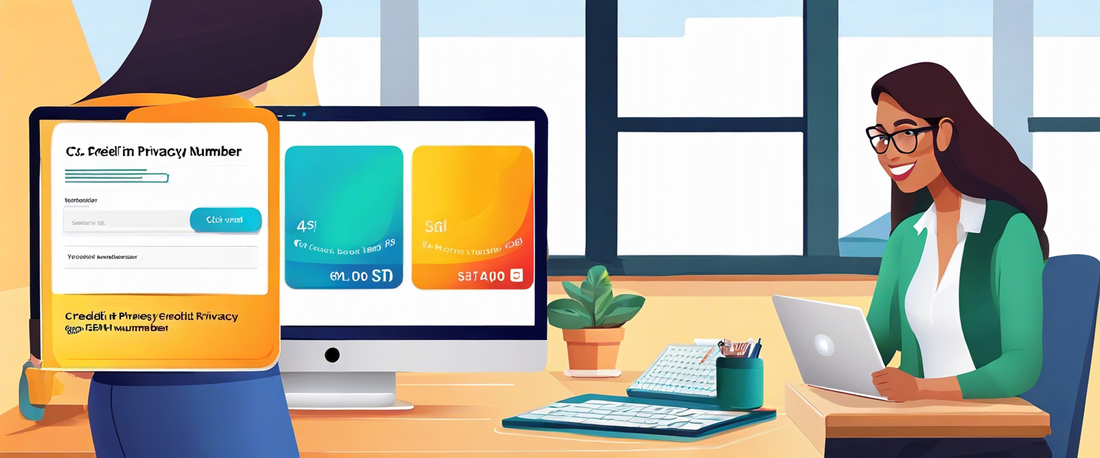
Step-by-Step Guide: Creating Your Own CPN
Share
Creating your own CPN (Credit Privacy Number) can be a useful strategy for protecting your personal information and maintaining privacy. In this step-by-step guide, we will walk you through the process of creating your own CPN. Please note that CPNs are not intended to replace your Social Security Number (SSN) and should not be used for any fraudulent or illegal activities. It is important to use CPNs responsibly and within the boundaries of the law.
Understanding CPNs
Before diving into the steps of creating your own CPN, it is crucial to have a clear understanding of what CPNs are and how they function. CPNs are nine-digit identification numbers that are similar in structure to Social Security Numbers. They are primarily used by businesses for credit reporting purposes and are not issued by the government.
It is important to note that while CPNs can be legally obtained and used for certain purposes, they are not a means to establish a new identity or evade legal obligations. CPNs should only be used in situations where a business or organization requests an alternative to your SSN for credit-related purposes.
Step 1: Research and Legality
Before proceeding with the creation of your own CPN, it is crucial to conduct thorough research and ensure that you understand the legal implications and limitations of using a CPN. Familiarize yourself with the laws and regulations in your jurisdiction to avoid any potential legal issues.
Additionally, be cautious of any websites or services claiming to provide "guaranteed" CPNs or promising to erase negative credit history. These services are often scams and can lead to severe consequences. It is always best to follow the legal and legitimate processes for obtaining a CPN.
Step 2: Gather Required Information
Before creating your CPN, gather all the necessary information that will be required during the process. This typically includes your full legal name, date of birth, current address, and contact information. Having this information readily available will streamline the process and ensure accuracy.
Ensure that the information you provide is accurate and up to date. Any inconsistencies or inaccuracies can lead to issues down the line when using your CPN for credit-related purposes.
Step 3: Apply for a CPN
Once you have conducted thorough research, familiarized yourself with the legal implications, and gathered all the required information, you can proceed to apply for a CPN. There are several legitimate services and organizations that offer CPN application assistance.
During the application process, you will be required to provide the necessary information, submit any supporting documentation, and pay any applicable fees. It is important to carefully review the application requirements and follow the instructions provided by the service or organization.
Step 4: Use Your CPN Responsibly
After successfully obtaining your CPN, it is crucial to use it responsibly and within the boundaries of the law. Remember that CPNs should only be used for credit-related purposes when explicitly requested by a business or organization. It is illegal to use a CPN for fraudulent activities or to establish a new identity.
Keep your CPN information secure and avoid sharing it unnecessarily. Treat your CPN with the same level of privacy and protection as you would your Social Security Number.
Additionally, regularly monitor your credit reports to ensure that your CPN is being used correctly and that there are no unauthorized activities or errors. If you notice any discrepancies or suspicious activities, report them immediately to the appropriate authorities.
Step 5: Understand the Limitations
It is important to understand that while CPNs can be useful in certain situations, they do have limitations. CPNs are not a means to erase negative credit history or evade legal obligations. They are simply an alternative identification number for credit reporting purposes.
When applying for credit or loans, some lenders may still require your SSN and may not accept a CPN. It is essential to be aware of these limitations and understand that a CPN may not always be a viable substitute for your SSN.
Additionally, CPNs do not provide any additional legal rights or privileges. They should be used responsibly and within the confines of the law.
In conclusion, creating your own CPN can be a valuable strategy for protecting your personal information and maintaining privacy. By following the steps outlined in this guide and using your CPN responsibly, you can leverage this alternative identification number for credit-related purposes. Remember to always stay informed about the legal implications and limitations of using a CPN and use it in a lawful and responsible manner.
